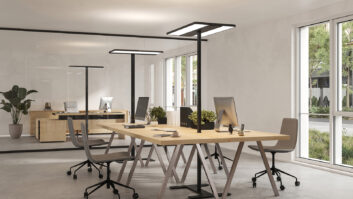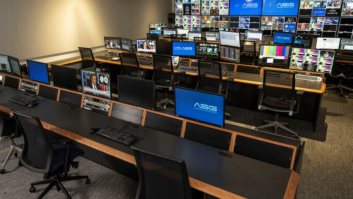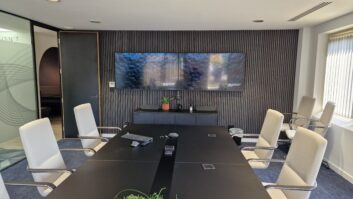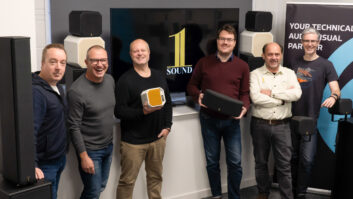 Offices have re-opened. And while many employees have reaped the benefits of home-working, heading back to the office again will be a welcome change. In fact, our research showed 54% of employees plan to split their time evenly between office and home. After all, there’s nothing quite like office banter and going for lunch with colleagues.
Offices have re-opened. And while many employees have reaped the benefits of home-working, heading back to the office again will be a welcome change. In fact, our research showed 54% of employees plan to split their time evenly between office and home. After all, there’s nothing quite like office banter and going for lunch with colleagues.
However, as people have got used to the relative peace and quiet of their home office, being thrust back into a busy office environment could take some getting used to. From competing colleagues’ voices and phones ringing to webinars playing on high volume, there are a number of distractions and background noises workers must contend with.
For workers at their desks and in shared spaces, these distractions can make it difficult to concentrate. Our research shows 56% of office workers are concerned that noise levels in the office will make them less productive. And while offices have always been noisy environments, it seems employees’ tolerance levels have depleted since working from home.
The research also shows the issue of noise could become a point of friction, as 60% think they’ll get fed up if their noisy co‐workers break their concentration. Equally, 42% worry they will be prone to noise rage if their colleagues are too loud. This combination would lead to a volatile office environment, particularly if hot-desking is in place and office workers don’t know the people around them.
Not only could noise have an effect on employees, but it could also jeopardise the customer experience. For example, if a customer has to repeat themselves, especially when relaying basic information, the experience can easily turn into a negative one. This increases the likelihood they will go elsewhere for a better, less frustrating experience. And frustrated employees who are struggling to stay motivated and productive could have a negative impact on the performance and reputation of any business.
So how can the issues around noise be addressed? Organisations should look to prioritise meeting equality, so even in the most demanding environments, employees have equal experiences.
To do this, employers must understand how each individual likes to work on a typical day and to appreciate there could be communication differences. By understanding each individual persona, organisations will be in the best position to equip them with the right tools and design spaces to meet their needs.
Whether working remotely or in an office, by phone or via laptop, everyone should be equipped to participate as equals in all meetings, no matter how they choose to work. For example, laptop microphones aren’t good enough to replicate the experience of being in the same room. They don’t screen out background noise or capture the subtle intonations of voice that convey important meaning. Without equipping employees with the right tools to sound their best, it could have an impact on the success of the meeting.
Ultimately, the goal is to get the best out of people – this means reducing anxiety and friction, while maximising productivity and focus. It is vital to provide employees with the right equipment to drown out any unwanted sounds.
At the same time, organisations need to re-design their offices to support new ways of working. By understanding how employees like to work, organisations can design spaces to suit these needs. For example, our research shows that 77% of organisations are planning to redesign the office to create more open and collaboration spaces, while also creating ‘quiet zones’ and huddle spaces. Doing this will play a key role in reducing noise distractions, meeting the needs of employees with different ways of getting things done, while also equalising the virtual experience through meeting equality for the workforce.
To make the return to office a smooth transition, and create a successful long-term hybrid working strategy, organisations must ensure noise doesn’t impact the employee experience. By connecting people, spaces and technology organisations make the office experience a welcoming one, reducing distractions and ensuring employees sound their best no matter where they are located.







